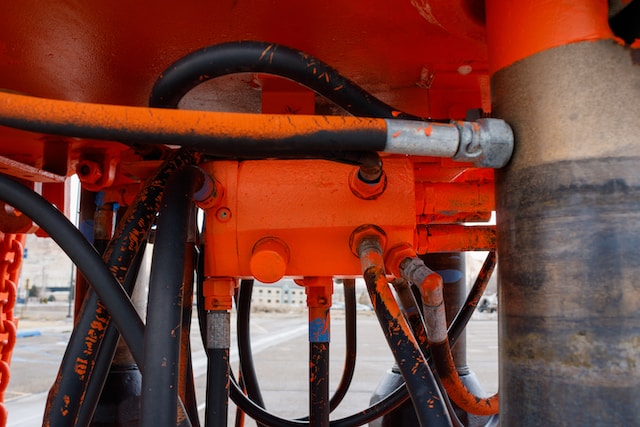When hydraulic hoses fail, it halts productivity and increases the cost of the job. Emergency unplanned repairs can be three to nine times more costly than preventative maintenance.
To reduce the chance of failure, regularly inspect hydraulic hoses for visible signs of wear and tear. Physical damage is the leading cause of hose failure.
Leaks
Hydraulic hoses can play an essential role in your machinery. If they get damaged or blown out, it can lead to machine and staff downtime that stalls your project and drives up costs. That’s why it is essential to have an onsite hydraulic mobile hose repair Charlotte, NC, that can visit you and quickly fix any broken or leaking hoses.
Hydraulic hoses are critical in many machines by transmitting pressurized fluids throughout equipment and machinery. But, these hoses can wear out and leak over time.
Leaks in hydraulic hoses are the most common issue requiring mobile hose repair. These can occur when a hose connects to a solid fitting or due to continuous rubbing against a surface.
While tape may work briefly, the best way to fix a leak in a hydraulic system is with a portable crimper. These tools are commonly found on the service trucks of a mobile hydraulic company. This allows for a quick and easy repair without removing the hydraulic hose from the machine. This also helps prevent costly downtime due to unexpected equipment and part failures.
Abrasions
Hydraulic hoses are critical components of machines, connecting the various components and carrying pressurized hydraulic fluid. They enable machinery to lift heavy loads, steer vehicles, and efficiently operate multiple functions.
Unfortunately, they’re also one of the most vulnerable parts of a machine. Physical damage to a hydraulic hose is typical and can cause a loss of hydraulic fluid, leading to lowered performance and equipment downtime.
If a hose becomes damaged, you’ll want to find a mobile hydraulic hose repair provider to provide onsite repairs. This way, a qualified specialist is just a phone call or text away and can respond quickly to your emergency. This ensures you don’t experience unnecessary production delays and costly downtime. This is especially important when working in remote areas where production schedules must be adjusted accordingly.
Bulges
Hydraulic hoses are flexible tubes that transport fluid under high pressure. They have an inner tube, reinforcement layers, and an outer cover that protects against external wear and tear.
Hoses are often damaged by over-pressurization, improper installation, and environmental factors like extreme temperatures or chemicals. They may also develop leaks, abrasions, or cracks over time.
Repairing hydraulic hoses is a process that requires the right tools and skills. First, the hose must be depressurized before the repair process begins. Then, a technician must identify the problem and find the exact location of the damage. Next, they must cut the hose at the point of the damage. This allows them to remove the damaged section and install a new one. Once the hose is repaired, it must be reinstalled and carefully tested for proper operation.
Cracks
Hydraulic hoses are the lifelines of heavy equipment and power systems. When they rupture, they can grind productivity to a halt and incur expensive downtime. Regular inspections and proactive replacement reduce costly breakdowns.
Structural issues like twists and worn patches can cause internal pressure spikes that weaken the hose over time and lead to failure. External damage like kinking or crushing can restrict material flow and reduce hose performance. Look for color changes that indicate chemical attack or deterioration and for cover blisters that expose the reinforcement to the environment. These signs indicate that the hose is nearing the end of its life and needs to be replaced. A good preventive maintenance program requires a visual inspection every three months or every 400 to 600 hours of usage.
Damaged Fittings
Hydraulic hoses experience tremendous pressure when attached to equipment, which often results in contact with solid points. This stress can lead to cracks and other problems, particularly at the connections. These contacts are where the hoses connect to fittings and valves or pumps.
The quality of your hydraulic hose fittings will also impact the longevity of the hose assembly. Over time, improper connections or incorrect fabrication methods can cause the hose assembly to fail.
Ensure you have the correct hose length for your equipment, and check the minimum operating and maximum burst pressure of each hose before installing it. It is also essential to avoid over-torquing, which can damage threads or mating seat angles and prevent proper sealing.





Leave a Reply